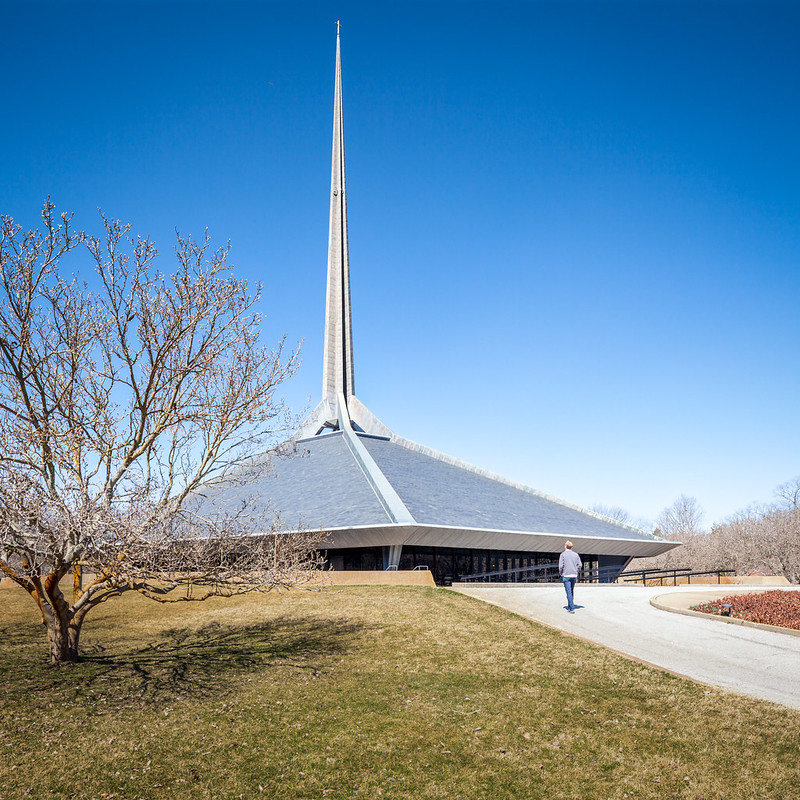 |
| North Christian Church by Eero Saarinen (1954). Photo ©Darren Bradley |
The first modernist building - the Tabernacle Church of Christ (now the First Christian Church) - was brought to Columbus at the impetus of Miller's aunt and uncle. It was designed by Eliel Saarinen and is one of the first modernist churches in the United States.
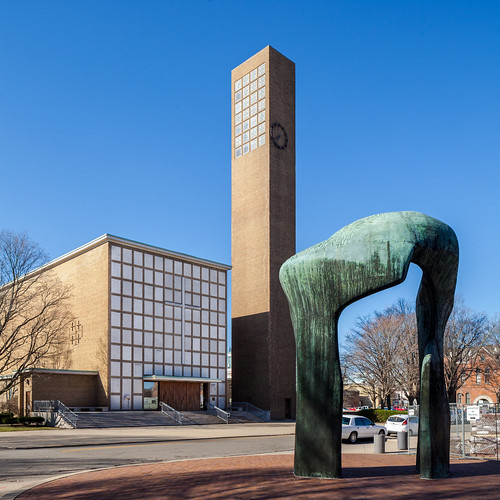 |
| Tabernacle Church of Christ and Large Arch, a sculpture by Henry Moore. Photo ©Darren Bradley |
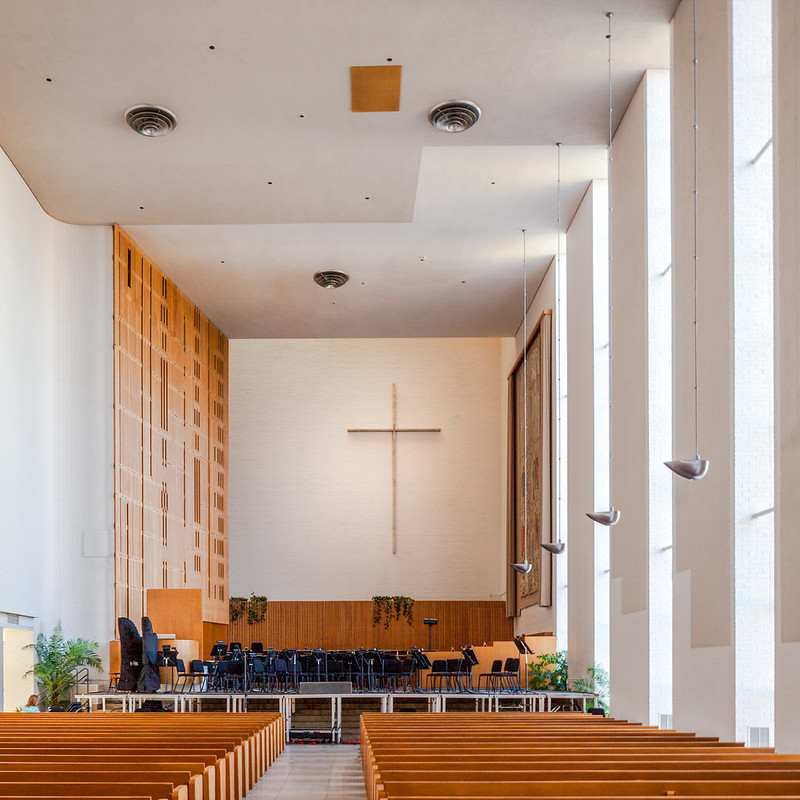 |
| Photo ©Darren Bradley |
 |
| Photo ©Darren Bradley |
The Miller family founded the Cummins Diesel engine company, which was headquartered in Columbus. As the company grew, so grew the fortunes of the city. Irwin wanted to promote Columbus as a modern city, and believed that modernist architecture was a means to communicate this idea to the rest of the world. He soon began to fund projects around the city, paying the architecture fees for building projects, provided that they choose an architect from a pre-approved list.
This program was a success, and soon schools and other public buildings, corporate headquarters, and other buildings around town were built in this fashion.
Even other projects, like the city newspaper, the Republic, joined in. Their own headquarters was built by SOM, but without any support from Miller.
Architects were soon clamoring for an opportunity to design a project in Columbus, as a sign of prestige that continues to this day. There are projects by Richard Meier, Harry Weese, Kevin Roche, both Eliel and Eero Saarinen, John Carl Warnecke, I.M. Pei, Gunnar Birkets, Cesar Pelli, and many others.
 |
| Inside the North Christian Church by Eero Saarinen (1964). The concrete structure is built around a central alter, with an oculus that lets in light from the ceiling. Photo ©Darren Bradley |
There are six National Historic Landmarks in the city of Columbus, and all are modernist buildings.
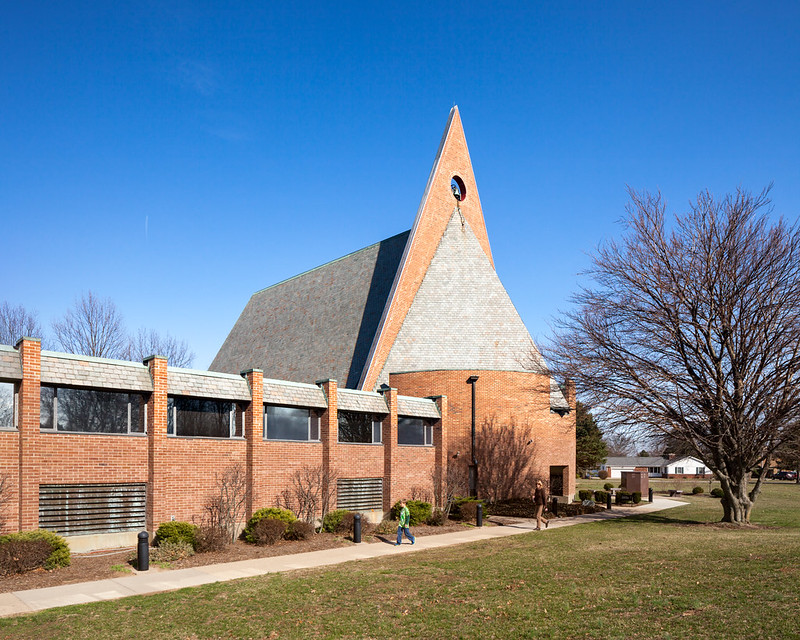 |
| Harry Weese is one of the most prolific architects in Columbus. His First Baptist Church from 1965 is also a Historic National Landmark. |
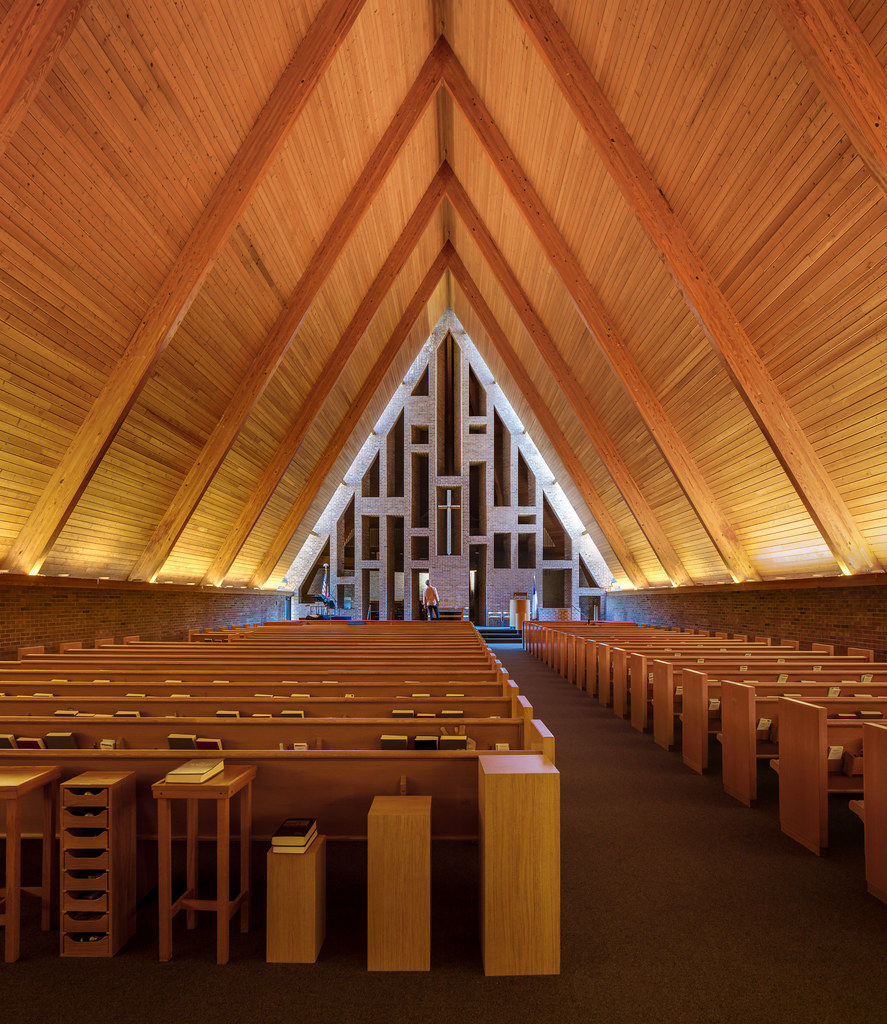 |
| I loved the interior of this church by Harry Weese (1965). Photo ©Darren Bradley |
Finally for today, I'll leave you with one final project. The Cleo Rogers Memorial County Library by I.M. Pei (1969) is opposite Eliel Saarinen's church. Pei was very conscious of this and designed the library to compliment the church without trying to overshadow it or compete for attention.
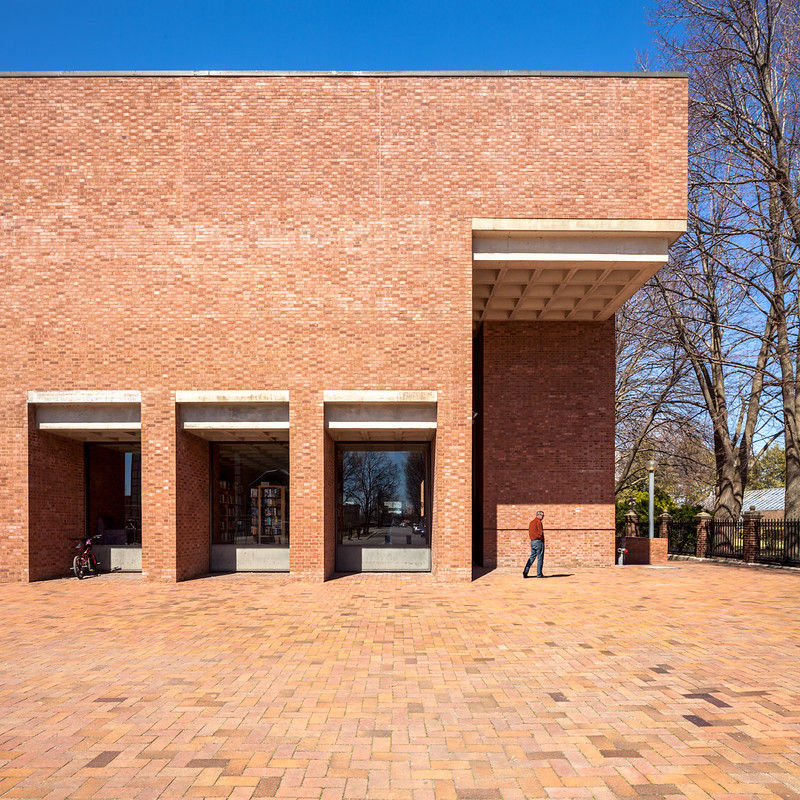 |
| Photo ©Darren Bradley |
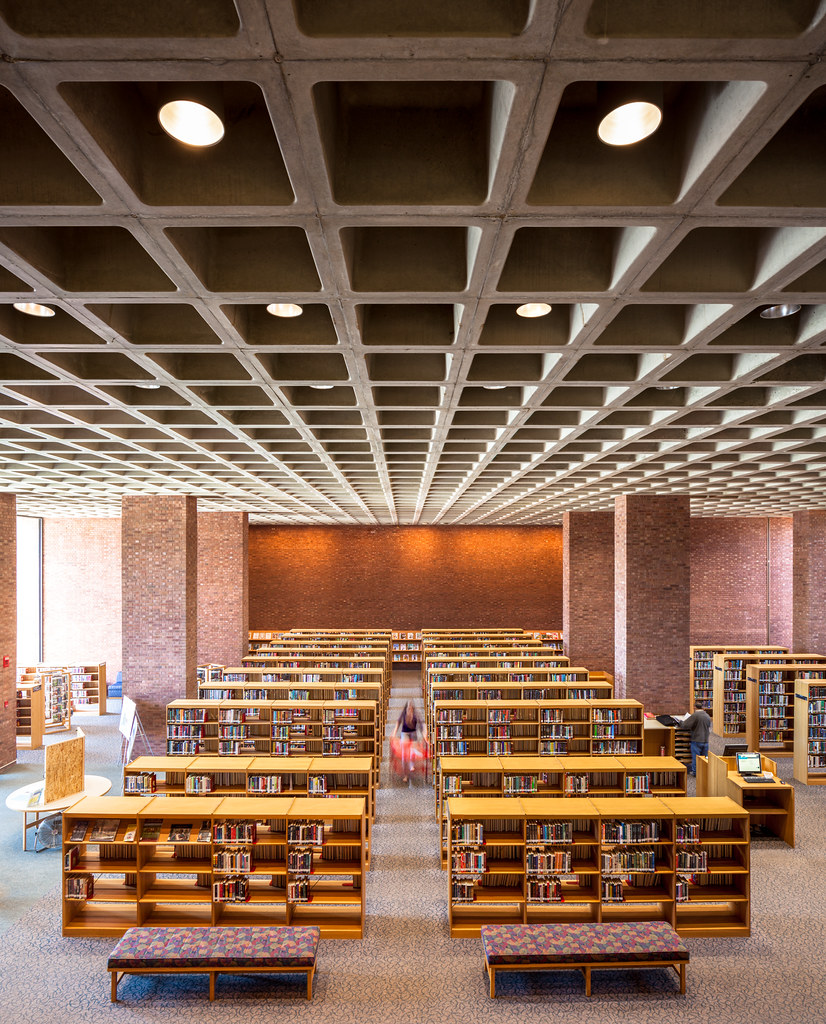 |
| Photo ©Darren Bradley |

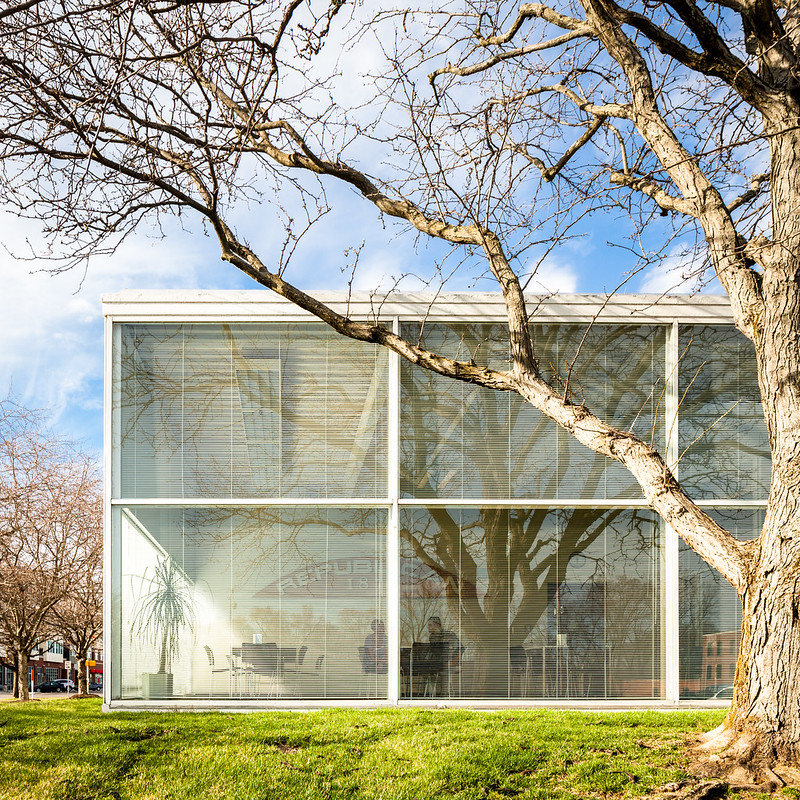
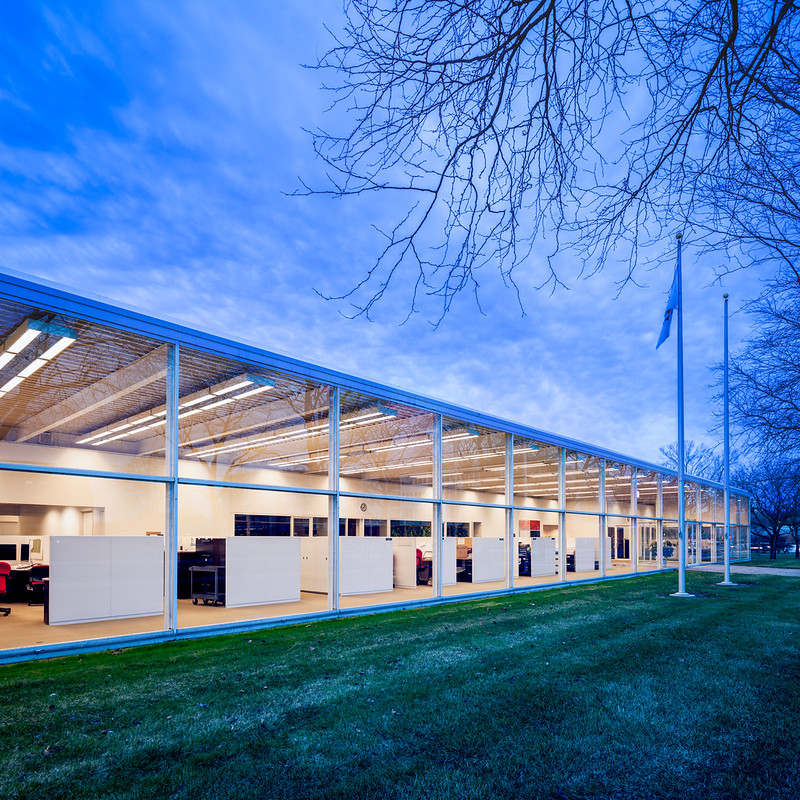
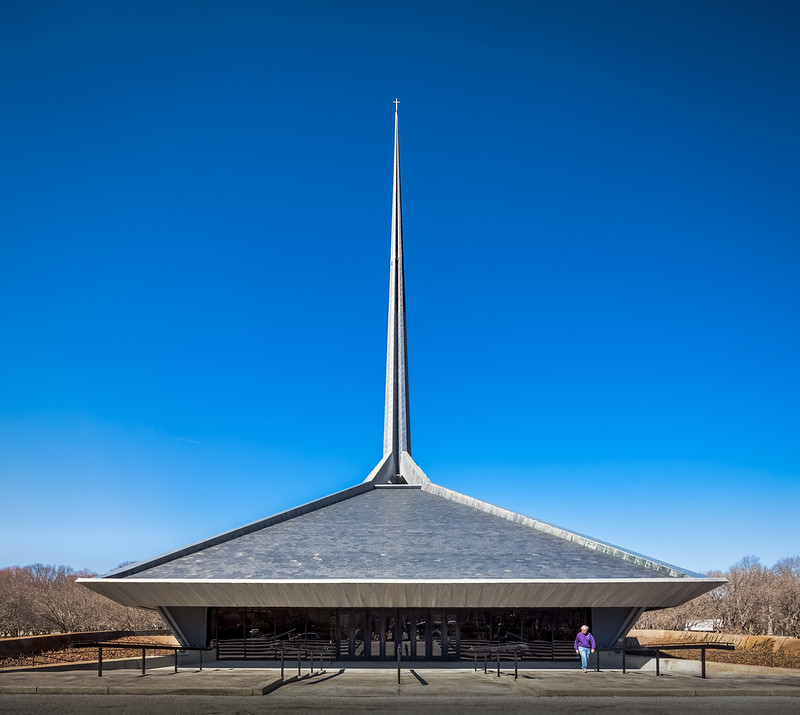
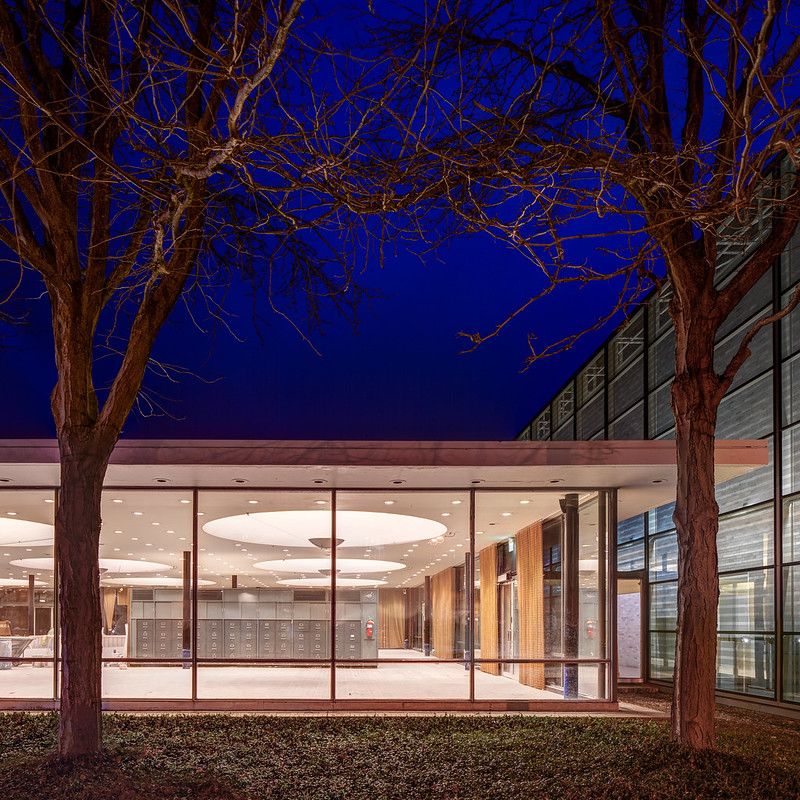
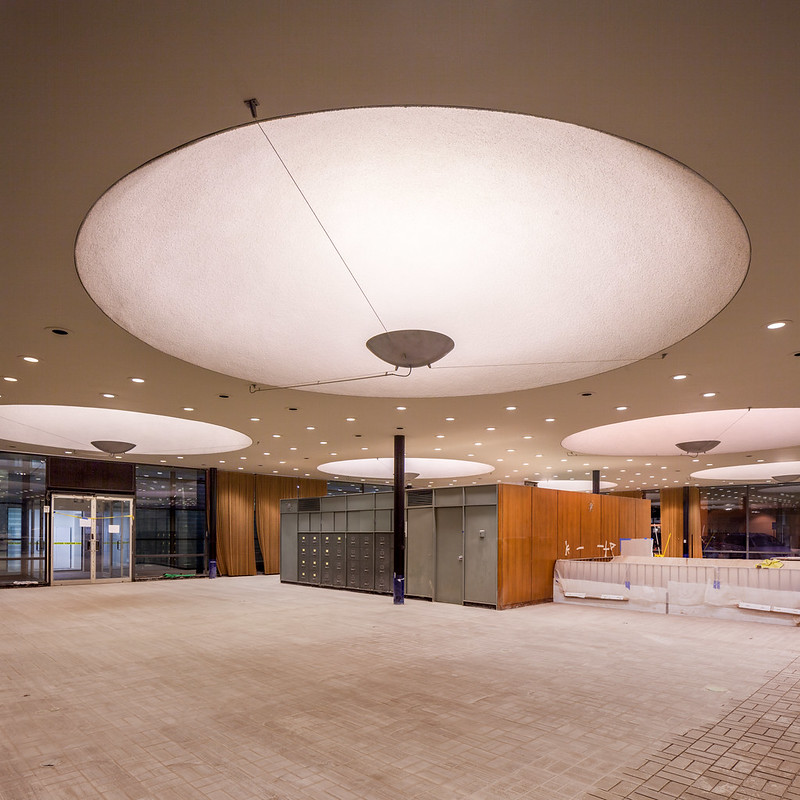
These are exactly the sort of buildings that used to really excite me when I was a boy in the 1960s, and which drew me towards my huge interest in architecture. The textures, perspectives and rather OTT symbolism are still engaging. Great photos.
ReplyDeleteGrowing up in Columbus, I just assumed that everyone went to school, church, the bank, or even the phone company surrounded by beautiful architecture. It wasn't until we moved away that I really appreciated what an amazing town it was, and still is. Thanks for these great pictures. I'm glad you enjoyed your visit.
ReplyDeleteGrowing up there in the late 50s and 60s. was a great experience . My father Dr. James L Stoner was the minister of the North Christian Church . We were very close friends of the Millers. J Irwin was very involved with the church. And I grew up with his son William. Great times and a beautiful city to live in .
ReplyDelete